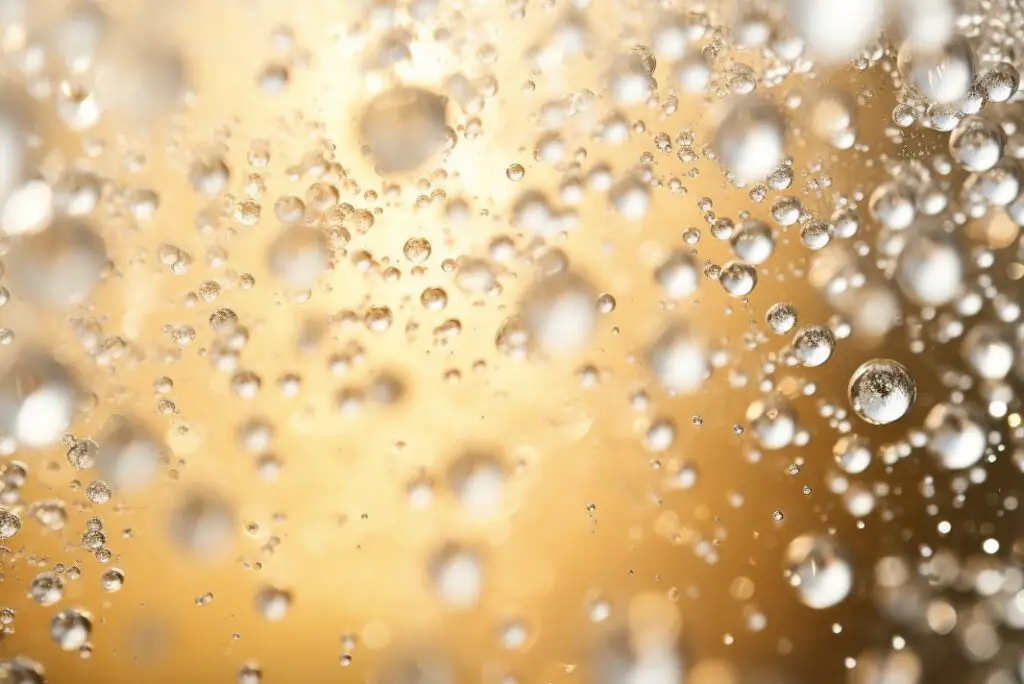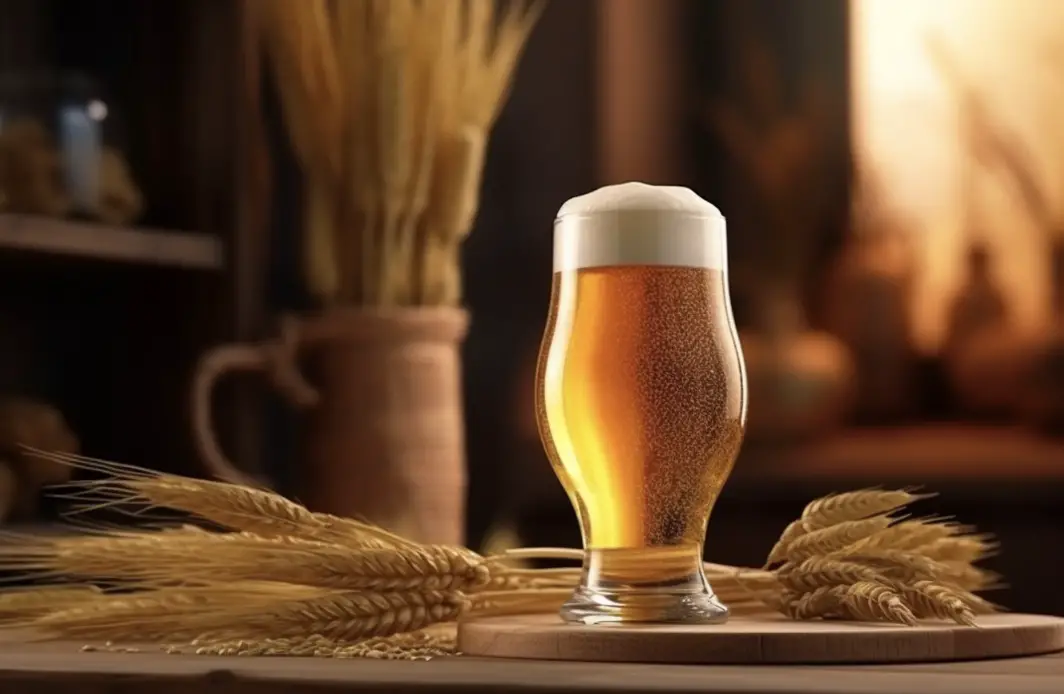Is Prosecco carbonated? The short answer is yes, Prosecco is indeed carbonated.
Prosecco is an Italian white wine, known for its delicate bubbles and refreshing taste. It has become increasingly popular in recent years, as people look for an alternative to the more expensive Champagne, or simply want a lighter and more playful option.
In this blog post, we will dive into the world of Prosecco, exploring its history, production methods, regional variations, and much more. We’ll also compare it to other carbonated wines and discuss the best ways to enjoy this effervescent treat.
The History of Prosecco
Prosecco hails from the Veneto and Friuli Venezia Giulia regions of northeastern Italy. Its name is derived from the village of Prosecco, located near the city of Trieste. The wine has a long history, dating back to Roman times, when it was known as “Puccino.” Since then, Prosecco has evolved into the delicious, bubbly wine we know today.

The main grape used in the production of Prosecco is Glera. This grape variety has been grown in the region for centuries, and its naturally high acidity and neutral flavor profile make it perfect for producing sparkling wines.
Over time, other grape varieties have also been introduced to Prosecco production, such as Verdiso, Bianchetta Trevigiana, and Perera.
Production Methods
Prosecco is produced using the Charmat-Martinotti method, also known as the tank method or Metodo Italiano. This method of production is what sets Prosecco apart from other sparkling wines, such as Champagne, which is made using the traditional method.
In the Charmat-Martinotti method, the base wine is first produced from the Glera grapes. The wine is then transferred to a pressurized stainless steel tank, where it undergoes a secondary fermentation.

This is achieved by adding sugar and yeast to the wine, which creates the bubbles through a process called carbonation. The wine is then cooled, clarified, and bottled under pressure to maintain its fizz.
This method of production is more cost-effective and quicker than the traditional method used for Champagne, which involves a secondary fermentation in the bottle. The result is a more affordable and accessible sparkling wine that still maintains a high level of quality and flavor.
Regional Variations
There are two main types of Prosecco: Prosecco DOC (Denominazione di Origine Controllata) and Prosecco DOCG (Denominazione di Origine Controllata e Garantita).
The DOC designation covers a larger area, encompassing the Veneto and Friuli Venezia Giulia regions, while the DOCG designation is reserved for the smaller, more prestigious subregions of Conegliano Valdobbiadene and Asolo.
Prosecco DOCG wines tend to be of higher quality and offer more complex flavors, as they are produced in smaller quantities and benefit from stricter regulations and more favorable growing conditions. However, Prosecco DOC wines can still offer excellent value and flavor, making them a popular choice for everyday enjoyment.
Comparing Prosecco to Other Sparkling Wines
When it comes to carbonated wines, there are several options to choose from, including Champagne, Cava, and Prosecco. While they all share the characteristic bubbles, each offers its unique flavor profile and production method.
Prosecco, as we’ve discussed, is an Italian sparkling wine, known for its light, fruity, and floral flavors. Its production method results in larger, frothier bubbles, and a more refreshing, easy-drinking style. Prosecco is often seen as a more casual, fun, and approachable option compared to Champagne and Cava.
Champagne is often considered the gold standard of sparkling wines, with a reputation for quality, prestige, and luxury. Produced in the Champagne region of France, this wine undergoes a secondary fermentation in the bottle and is typically aged for a longer period. This results in a more complex, yeasty flavor profile, with fine and persistent bubbles.
Cava is a Spanish sparkling wine, primarily produced in the Catalonia region. Like Champagne, Cava is made using the traditional method, with secondary fermentation in the bottle.
This gives Cava a similar flavor profile to Champagne, with yeasty, bready notes and fine bubbles.
However, Cava is typically more affordable than Champagne, making it a popular choice for those looking for a budget-friendly alternative.
How to Enjoy Prosecco
Prosecco is best enjoyed chilled, between 40-45°F (4-7°C). It’s important not to over-chill the wine, as this can dull the flavors and aromas. When it comes to glassware, a tulip-shaped glass or a white wine glass is ideal, as these shapes help to concentrate the wine’s delicate aromas.
As for food pairings, Prosecco is incredibly versatile. Its high acidity and refreshing bubbles make it a perfect match for a wide range of dishes, from light appetizers to rich, creamy pasta dishes. Some classic pairings include fried calamari, prosciutto-wrapped melon, and seafood risotto.
Conclusion
In summary, Prosecco is a delightful, carbonated wine that offers an affordable and approachable alternative to other sparkling wines. Its unique production method, regional variations, and light, fruity flavors make it a versatile and enjoyable choice for any occasion.
Here are 10 facts about Prosecco to impress your friends:
1. Prosecco is carbonated through the Charmat-Martinotti method.
2. The primary grape used in Prosecco is Glera.
3. Prosecco hails from the Veneto and Friuli Venezia Giulia regions of Italy.
4. There are two main types of Prosecco: Prosecco DOC and Prosecco DOCG.
5. Prosecco is often more affordable than Champagne and Cava, due to its cost-effective production method.
6. The bubbles in Prosecco are larger and frothier than those in Champagne or Cava.
7. Prosecco is best served chilled, between 40-45°F (4-7°C).
8. A tulip-shaped glass or white wine glass is ideal for enjoying Prosecco.
9. Prosecco is incredibly versatile when it comes to food pairings.
10. Prosecco is known for its light, fruity, and floral flavors, making it a refreshing and easy-drinking option.
FAQs
Is Prosecco just sparkling white wine?
No, Prosecco is not just sparkling white wine. It is a specific type of sparkling wine that originates from the Veneto region of Italy. Prosecco is made primarily from the Glera grape variety and is produced using the Charmat method, which is different from the traditional method used to make Champagne. This method results in a lighter, fruitier, and more affordable sparkling wine compared to Champagne or other sparkling wines.
Is sparkling white wine the same as Prosecco?
No, sparkling white wine and Prosecco are not the same. Prosecco is a specific type of sparkling wine that originates from Italy, specifically the Veneto region. It is made primarily from the Glera grape variety and is known for its light, fruity, and floral flavors. On the other hand, sparkling white wine is a broader category that includes various types of sparkling wines produced around the world, such as Champagne, Cava, and others.
Is Prosecco considered carbonated?
Yes, Prosecco is considered a sparkling wine and is therefore carbonated. It undergoes a secondary fermentation process, which produces carbon dioxide and creates the characteristic bubbles in the wine.
Does Prosecco have a high carbonation level?
Yes, Prosecco typically has a moderate to high level of carbonation.
Is Prosecco just carbonated white wine?
No, Prosecco is not just carbonated white wine. Prosecco is a specific type of sparkling wine that originates from Italy, specifically the Veneto region. It is made from the Glera grape variety using the Charmat method, where the secondary fermentation takes place in large tanks rather than in the bottle. This method results in a light, fruity, and aromatic wine with a distinctive effervescence. While both Prosecco and carbonated white wine are sparkling, they differ in terms of production methods, grape varieties used, and regional characteristics.
Does Prosecco have carbonation?
Yes, Prosecco is a sparkling wine that is known for its carbonation. It undergoes a secondary fermentation process, which creates the bubbles commonly associated with this type of wine.




